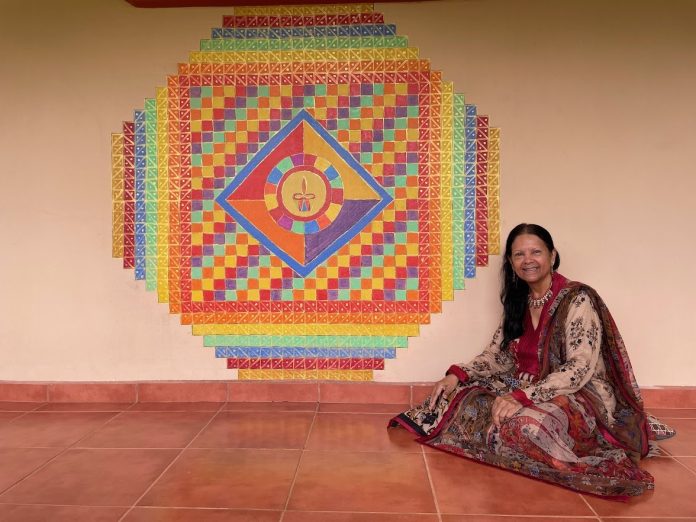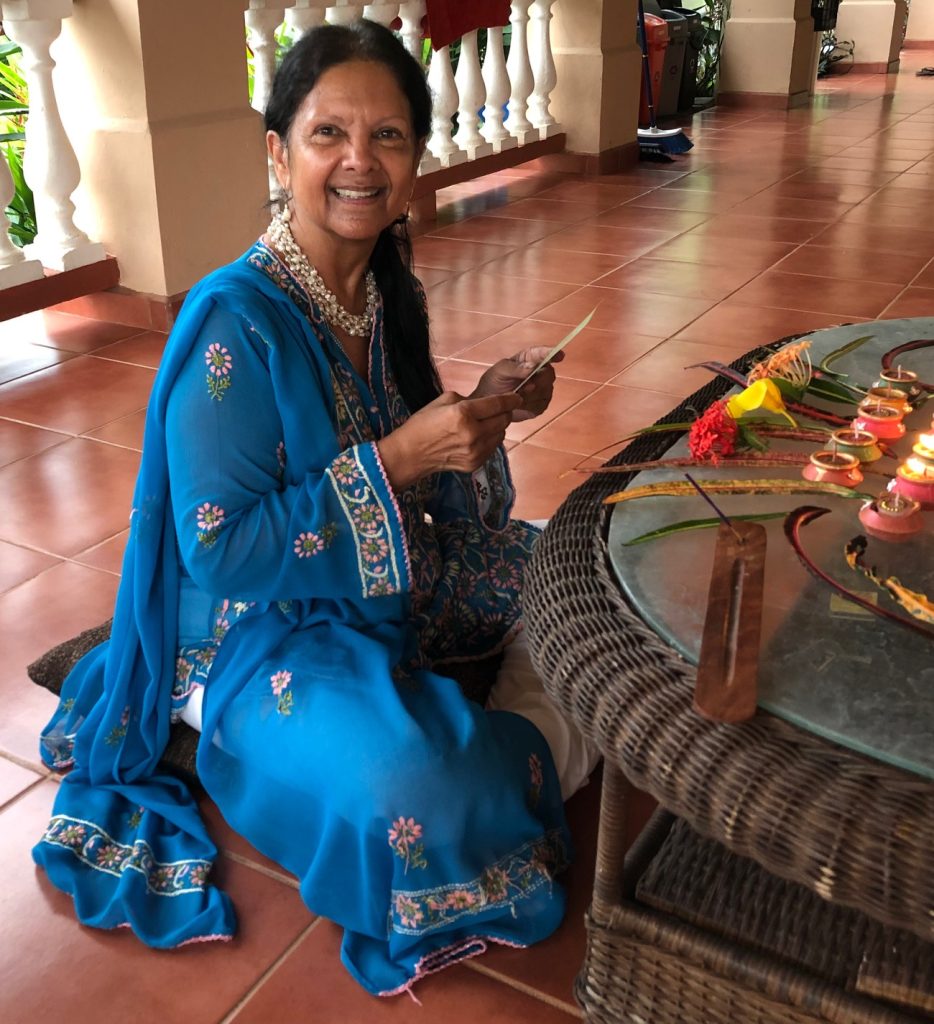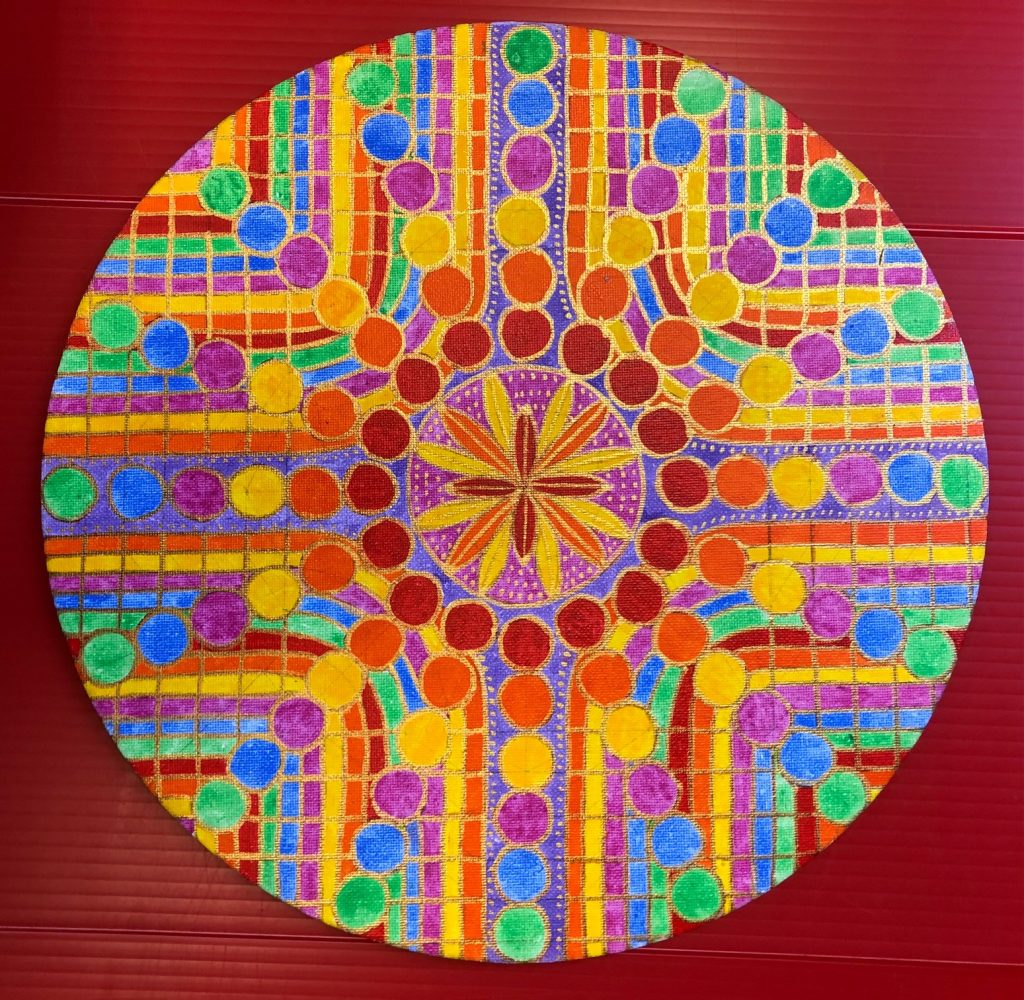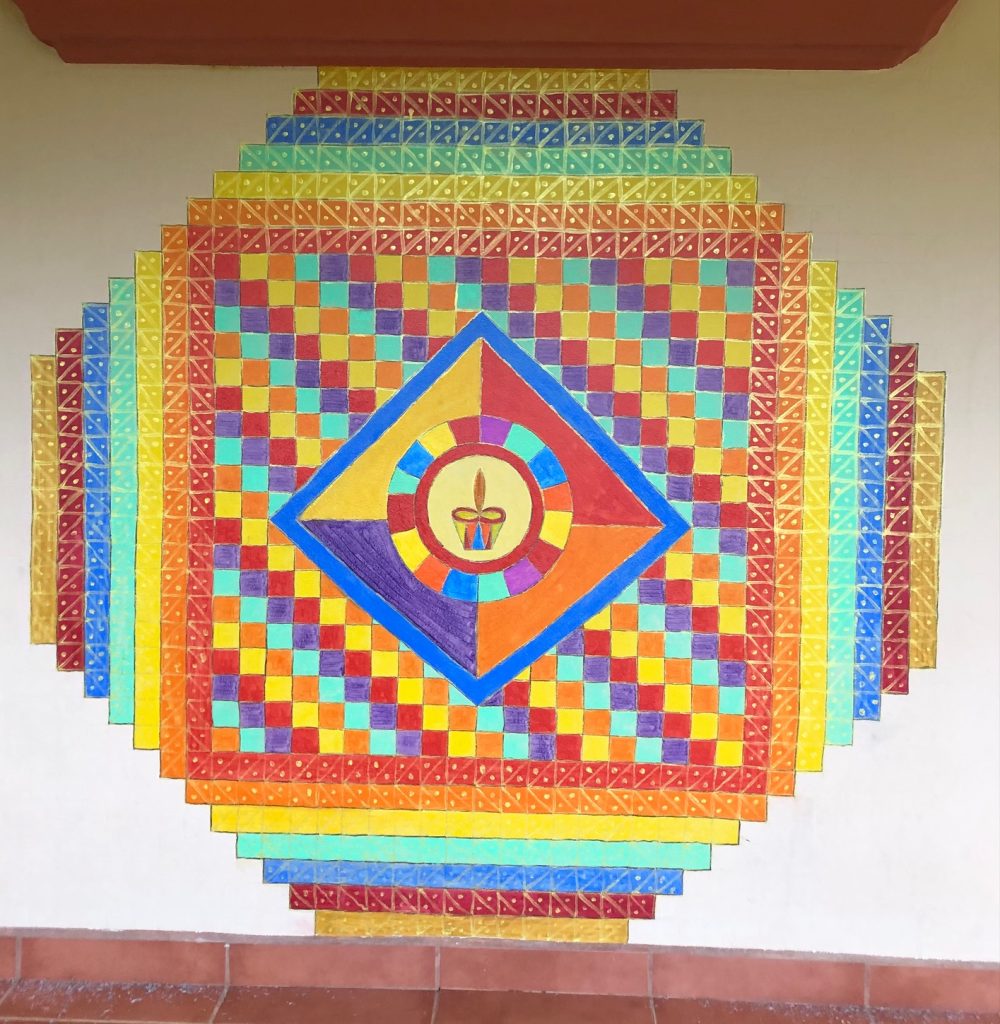
“Diwali” – The Hindu Festival of Lights – Hindus all over the world will celebrate Diwali or Deepavali: it means a “row of lights called deeyas.” The Hindu Festival of Lights will be celebrated on the evening of Monday 24th October 2022.
The prettiest of all Indian Festivals, the Festival of Lights is celebrated on the 15th day of the Black Fortnight in the Hindu month of Kartik. It is the day before the Hindu New Year. The Festival marks the darkest night of the year, when devotional prayers and ceremonies are offered to the Goddess Lakshmi, giver of happiness, health, wealth and prosperity. This Festival closely resembles Christmas. There are a lot of preparations, new clothes are bought, old debts are settled, angry quarrels are healed and everyone wishes everyone else good fortune for the New Year. Homes are repainted, fresh curtains are put up, cushions and upholstery are changed. Colored lights are hung at the front door and around the house.
Rice flour floor design patterns known as a “RANGOLI”, or flower petals, are placed at the entrance of the front doorsteps, to welcome the Goddess Lakshmi. One myth says that she comes down to earth on that evening to visit homes and shower blessings for the New Year. The meaning of this Festival is: “We should not only remove the darkness from our homes, but we should also remove the darkness from our hearts and minds such as hatred, jealousy, egotism, enmity. We should light the lamps of universal love, unity and brotherhood. We should strive to make the world happy, healthy and prosperous.”
Donations are given to charity and food banks; we should not only enjoy the delicious vegetarian feast of favorite foods and desserts ourselves but share it with others. Around 5 p.m. that evening an altar is set up and after a special family prayer (puja) ceremony, the deeyas are lit and decorated in every room in the house. Small gifts of sweets (methai), candles, incense and flowers are exchanged. Family and friends visit during an Open House, where tables of appetizers and desserts are served. Divali cards and ecards are sent to family, friends and business associates wishing them a Happy Divali and a Happy New Year. Games are played until early the next morning. No one goes to bed until the deeyas have gone out; it is forbidden to put them out.

An essential part of this general benevolence is sending small boxes of beautifully decorated “mithai” (desserts) to neighbors, friends, relatives and business associates. Absolutely no one goes without “mithai” on Divali Night. It does not matter how rich or poor you are: everyone joins in to experience the true spirit of love, unity and brotherhood by the sharing of “mithai”. There are a lot of competitions held the weeks before Diwali: the best Diwali greeting card design and message contest, Rangoli design contest, Deeya painting contest, table arrangement and floral arrangement contest; the best Diwali song and Music Contest. The best Diwali dhal, rice, vegetable, bread, yogurt, chutney, beverage and dessert recipe contest; Diwali photography contest. These are sponsored by local businesses to encourage everyone to participate. The judging becomes tougher each year.
A complete Hindu vegetarian meal consists of six basic items: split lentil soup (dhal), rice, vegetable (subji), bread (roti), yogurt (raita) and chutney. No alcohol is served on Diwali; lemon juice (nimbu pani) or milk is served with food. A freshly brewed cup of Indian milk tea (chai) always follows with “mithai”. Meals are served in individual, large high-lipped brass or stainless steel serving dishes known as a thali. The dhal, vegetable and yogurt are served in small separate bowls. All the food is mixed and eaten in the thali, which is a combination plate and bowl with a spoon.

My fondest memory of Diwali was growing up in an extended family with my grandparents, aunts, uncles and cousins. I was the first grandchild, therefore I got a lot of attention. My grandparents had cows and would make an altar for them and light deeyas around them. They said that they were also a part of our family and must join in the celebration just like us. It was a joy to watch their devotion to them because they produced the fresh milk for us to drink. The deeyas flickering in the dark Diwali night strengthen our determination to respect knowledge, family togetherness and a search for a radiant life.
Hindu devotional songs known as bhajans are played and sung in Hindu homes throughout the day of Diwali, the most popular bhajan is:
“Jai Lakshmi Mata”
O Goddess of Light, the dispeller of darkness, sickness and misery.
O Mother Lakshmi, the giver of happiness, health, wealth and prosperity.
I bow to thee, please destroy all my internal enemies: passion, anger, greed and accept my salutations.
“Jai Lakshmi Mata”
The Hindu Festival of Lights is part of my Series: “Festivals & Folklore of Trinidad, West Indies. These paintings can also be seen on my website.
A Rangoli symbolizes beauty, hope, and tradition. It derives from the sanskrit word Rangavalli: “Rang” “Avalli” which means row of colors. The ritual of drawing Rangoli patterns is a skill handed down from grandmother to mother to daughter and is considered an auspicious welcome sign that wards off negative energy and vibration before entering a home. Women start their daily chores by cleaning and washing the allocated area before drawing the Rangoli design outside the threshold of the main entrance, prayer area, courtyard, walls and in front of their sacred Tulsi plant.
It is drawn meticulously with bare fingers and is revered as a divine art, it is customary to chant sacred bhajans, they hope this daily ritual will bring peace and good luck. Elaborate designs are done for special occasions such as Diwali- the Hindu Festival of Lights, including footstep designs facing towards the home. It represents the happiness, positivity and liveliness in a household intended to welcome Lakshmi, the Goddess of health, wealth and prosperity. The purpose of Rangoli is beyond decoration, design depictions may vary as they reflect traditions for Weddings, Temple Ceremonies and Hindu Festivals. Large sums of money are spent by corporations as a “Commercial Welcome” in five star hotels for foreign Tours and Conferences designed by numerous people.
A Rangoli pattern is a floor design usually drawn using colored rice, chalk, flower petals, sand and rocks. Drawing and connecting simple dots or lines is what usually creates the exquisite floor design. Most of the motifs are either geometric shapes, depictions of deities or they imitate flora. Rangoli has various names throughout India: Kolam, Alpana and Rangavalli. Rangoli is meant for the moment or the occasion. Like a flower, its freshness is short lived, the impermanence of the Rangoli art can be like a candle in the wind. Once its purpose is served, it is erased and the ritual is repeated with the same intention and zeal.
Lopamudra was a woman philosopher, poet and enlightened being who lived during the Rig Veda period (1950BC-1100 BC). She wanted to help her husband in worshipping the Gods so she started to make Rangoli, a decoration for the Yagyakunda (a place of worship). Lopamudra asked the Panchatatva (the five elements-sky, wind, water, earth and fire) to give her colors to please her husband.
Submitted by Indra Persad Milowe | Tulsi Studio & Gallery
I am Indra Persad Milowe, a Trinidad born visual artist living and working in Salem, Massachusetts, U.S.A. My art brings to life many of my childhood memories of growing up in Trinidad in the 1950’s and 1960’s. My interest is in nature, still life and design.
I adored my St. Augustine Girls High School art teacher, Mrs. Helga Mohammed from Madrid, Spain. She was married to a Trinidadian. On my first day in her class at age 12, written on her blackboard was: “Art is not only a painting hanging up on a wall, art is in every aspect of your daily life.” These words have stuck in my head ever since. My paintings were chosen for the high school’s yearbook for two consecutive years. At age 15, I painted from nature, orchids on a branch. At age 16, I did a still life, a display of an apple, pear, and a bunch of grapes. Those two paintings and all the incredible reviews that came with them lifted my confidence in my artwork.
There is a personal story behind every one of my paintings. I painted every single festival celebrated in Trinidad as well as all the folklore stories that I heard while growing up. I retired from general, ophthalmic and psychiatric nursing in 2019 after having worked in England, Malta, Trinidad and the United States. Through British Nurses Overseas, I was able to work in different countries. Ultimately, I decided to go back to art during my retirement. I prefer working on canvas with multi-colored and gold acrylic paints.



































